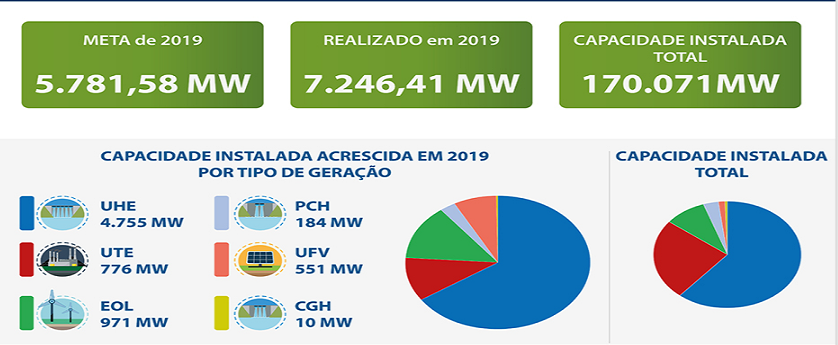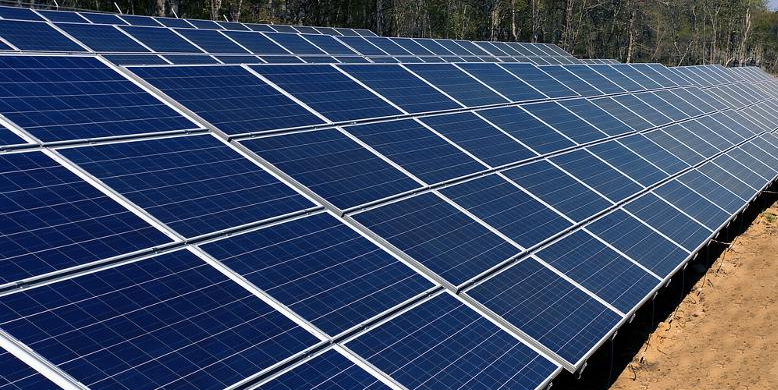
Solar installations in Brazil doubled in 2019
According to data from the Brazilian National Electricity Authority (Aneel), Brazil’s solar system roof installations in 2019 increased by almost two times compared to 2018. In 2018, the installation of solar systems has increased by more than 30,000 in the consumption of Brazilians, and by 2019, the figure reached 95,300. With this new type of equipment, Brazil now has a total of 145,300 buildings that can power themselves through distributed power generation (GD, geração distribuída).
This figure is only the number near the solar production sites (consumers near the solar farm). If calculate all distributed power generation nationwide, and include shared and long-distance power, the total number of installations last year alone reached 113,200 sets. The total number of GD systems in Brazil today is 171,000.

According to Rodrigo Sauaia, president of the Brazilian Solar Energy Association (Absolar), falling solar installation costs and rising electricity costs have increased this number. He said “The adjustment of the power system has made electricity costs more and more expensive, the use of technology has become widespread, when client know more of solar systems that led people to use such systems.”
In start stage
Despite the development of solar energy last year, he emphasized that this number is still relatively small, indicating that Brazil is in its infancy in solar power generation.
“Now there are more than 84.8 million solar GD systems in the entire market. This is the limit of our development space, that is, the upper limit of the number of self-produced and self-consumed power systems. So 171,000 systems account for only 0.2%, which means that we are still The starting point, “he said.
Because great potential development, Rodrigo believes that reform of incentives for solar power should be postponed. In his view, Brazil’s National Electricity Authority’s proposal to change related tax policies may hinder the expansion of the solar market.
But Adriano Pires, director of the Brazil Infrastructure Center (CBIE), is opposed, saying that “continuing subsidies is meaningless.” In addition to the fact that Brazil has a large number of renewable resources in terms of electricity, it cannot be compared with high-income countries. “We also have to worry about health, public safety, education, etc. Why should countries like us with income levels subsidize the solar sector and not other sectors?”
According to the Fraunhofer ISE, Germany now accounts for 47.3% of total electricity generation from renewable sources, compared with 83% in Brazil.

Will it affect the power supply system?
In addition to discussing related policies, there are also concerns about the impact of solar power on the power system due to the instability of its power generation.
Rodolfo Gomes, a researcher at the Brazilian International Energy Initiative (IEI Brasil), advocates the importance of clean energy (such as solar energy), and believes that it is also necessary to recognize the limitations of clean energy.
He mentioned that this type of power generation is time-limited, it can only generate electricity in sunny days and stop generating electricity at night. In his view, this could have an impact on Brazil’s power system.
“As the sun goes down, these solar systems produce less energy. From then on, the local power system will consume energy at a faster rate,” he said.
“To meet the growing demand, we need to operate a flexible power plant. Generally speaking, a power plant can meet this demand at its speed.”
But Rodrigo Pinto, a researcher at the University of California, disagreed. He said that low power generation at night will not cause problems because the energy consumption during this period is low, so the power system will not be overloaded.
According to data from the Brazilian National Electricity Authority (Aneel), Brazil’s solar system roof installations in 2019 increased by almost two times compared to 2018. In 2018, the installation of solar systems has increased by more than 30,000 in the consumption of Brazilians, and by 2019, the figure reached 95,300. With this new type of equipment, Brazil now has a total of 145,300 buildings that can power themselves through distributed power generation (GD, geração distribuída).
This figure is only the number near the solar production sites (consumers near the solar farm). If calculate all distributed power generation nationwide, and include shared and long-distance power, the total number of installations last year alone reached 113,200 sets. The total number of GD systems in Brazil today is 171,000.

According to Rodrigo Sauaia, president of the Brazilian Solar Energy Association (Absolar), falling solar installation costs and rising electricity costs have increased this number. He said “The adjustment of the power system has made electricity costs more and more expensive, the use of technology has become widespread, when client know more of solar systems that led people to use such systems.”
In start stage
Despite the development of solar energy last year, he emphasized that this number is still relatively small, indicating that Brazil is in its infancy in solar power generation.
“Now there are more than 84.8 million solar GD systems in the entire market. This is the limit of our development space, that is, the upper limit of the number of self-produced and self-consumed power systems. So 171,000 systems account for only 0.2%, which means that we are still The starting point, “he said.
Because great potential development, Rodrigo believes that reform of incentives for solar power should be postponed. In his view, Brazil’s National Electricity Authority’s proposal to change related tax policies may hinder the expansion of the solar market.
But Adriano Pires, director of the Brazil Infrastructure Center (CBIE), is opposed, saying that “continuing subsidies is meaningless.” In addition to the fact that Brazil has a large number of renewable resources in terms of electricity, it cannot be compared with high-income countries. “We also have to worry about health, public safety, education, etc. Why should countries like us with income levels subsidize the solar sector and not other sectors?”
According to the Fraunhofer ISE, Germany now accounts for 47.3% of total electricity generation from renewable sources, compared with 83% in Brazil.

Will it affect the power supply system?
In addition to discussing related policies, there are also concerns about the impact of solar power on the power system due to the instability of its power generation.
Rodolfo Gomes, a researcher at the Brazilian International Energy Initiative (IEI Brasil), advocates the importance of clean energy (such as solar energy), and believes that it is also necessary to recognize the limitations of clean energy.
He mentioned that this type of power generation is time-limited, it can only generate electricity in sunny days and stop generating electricity at night. In his view, this could have an impact on Brazil’s power system.
“As the sun goes down, these solar systems produce less energy. From then on, the local power system will consume energy at a faster rate,” he said.
“To meet the growing demand, we need to operate a flexible power plant. Generally speaking, a power plant can meet this demand at its speed.”
But Rodrigo Pinto, a researcher at the University of California, disagreed. He said that low power generation at night will not cause problems because the energy consumption during this period is low, so the power system will not be overloaded.




